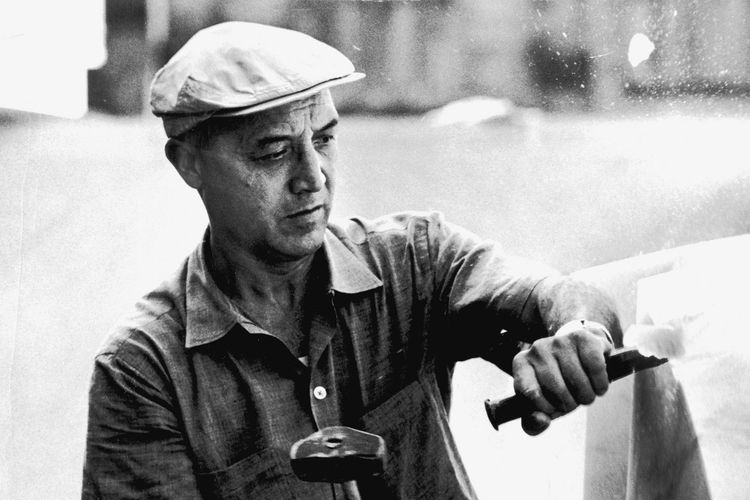ProductsChairsLounge chairsSofasOffice chairsChaises longuesStools & benchesSculpturesConference chairsAirport seatingStorage spaceMicro architectureDining tablesCafé tablesCoffee & side tablesDesksOffice furniture systemsConference systemsLightingClocksDecorative objectsCoat racks & wall shelvesTrays & vesselsNewBestsellerQuickly availableColour & materialAlexander Girard Antonio CitterioBarber OsgerbyCharles & Ray Eames George NelsonHella JongeriusIsamu NoguchiLounge chair finderOffice chair finderGift finderCare & repairSpare partsCare productsManufacturer warrantyVitra Circle StoresEndless configurations for all needs: Anagram SofaWe have a gift for you!InspirationsLiving roomDining roomHome OfficeChildren's roomOutdoorHome StoriesAugmented RealityColours & materialsWorkspaceFocusMeetingWorkshopClub OfficeCitizen OfficeStudio OfficeDynamic SpacesHospitalityAirportsEducationCo-WorkingHealthcareOur ClientsDestination WorkplaceA case for classicsOffice chairsDancing OfficeHome StoriesAugmented Reality - bring Vitra products into your homeA case for classicsColour & materialAn open house A leading space for a leading art collegeHigh comfort of low energyAn office landscape - without walls or partitionsServicesCare & repairSpare partsCare productsManufacturer warrantyFAQ and contactInstructionsInstructions for earlier productsConsulting & Planning StudioVitra Circle StoresConsulting & planning in the VitraHausOutdoor care instructionsRepair, maintenance, overhaul at the Vitra Circle Store Campus ProfessionalsCAD dataProduct factsheetsCertificatesBrochuresSustainability reportInstructionsEcology informationpConPlanning examplesColour & Material LibraryCertificates and standardsTo the dealer loginOur ClientsAnagram SofaMikadoTyde 2 on castorsACXDancing OfficeOffice chairsMagazineStoriesConversationsExhibitionsDesignerProject VitraJust Do It!EVER GREENWhy the Eames La Fonda Chair was designedWhen a Sofa is more than just a Sofa: Anagram100% virgin wool – 100% recyclableAn archive is like a time capsuleVitraHaus Loft - A conversation with Sabine MarcelisWalking the talkA 1000 m2 piece of furnitureFrom a toy to an objectA studio visit with Tsuyoshi TaneThe Eames Collection at the Vitra Design MuseumAbout the partnership between Eames and VitraVitra CampusExhibitionsGuided tours & workshopsFood and drinkShoppingActivities for familiesArchitectureYour eventPlan your visitVitra Campus appCampus EventsNewsVitraHausVitra Design MuseumVitra SchaudepotVitra Circle Store CampusOudolf GartenAbout VitraSustainabilityJobs & CareersDesign processThe Original is by VitraHistory - Project Vitra
Biography
Isamu Noguchi, born in 1904 in Los Angeles to the Japanese poet Yone Noguchi and the American writer Leonie Gilmour, studied at Columbia University and the Leonardo da Vinci Art School.
'My Father, Yone Noguchi is Japanese and has long been known as an interpreter of the East and West, through poetry. I wish to do the same thing through sculpture.'
Isamu Noguchi
He subsequently established his first independent studio and received a Guggenheim Fellowship in 1927. Noguchi became an assistant to Constantin Brancusi in Paris and presented his first solo exhibition in New York. After studying brush drawing in China, he travelled to Japan to work with clay under the master potter Jinmatsu Uno.
His experiences living and working in different cultural circles are reflected in Isamu Noguchi's work as an artist. He is considered a universal talent with a creative oeuvre that went beyond sculpture to encompass stage sets, furniture, lighting, interiors as well as outdoor plazas and gardens. His sculptural style is indebted to a vocabulary of organic forms and exerted a sustained influence on the design of the 1950s.
'My Father, Yone Noguchi is Japanese and has long been known as an interpreter of the East and West, through poetry. I wish to do the same thing through sculpture', he wrote in his proposal for a Guggenheim Fellowship.
Isamu Noguchi died in New York in 1988.
His experiences living and working in different cultural circles are reflected in Isamu Noguchi's work as an artist. He is considered a universal talent with a creative oeuvre that went beyond sculpture to encompass stage sets, furniture, lighting, interiors as well as outdoor plazas and gardens. His sculptural style is indebted to a vocabulary of organic forms and exerted a sustained influence on the design of the 1950s.
'My Father, Yone Noguchi is Japanese and has long been known as an interpreter of the East and West, through poetry. I wish to do the same thing through sculpture', he wrote in his proposal for a Guggenheim Fellowship.
Isamu Noguchi died in New York in 1988.
